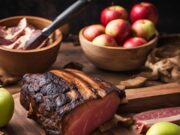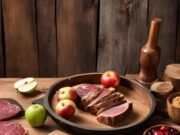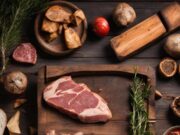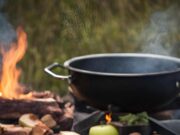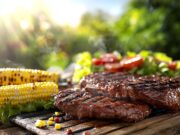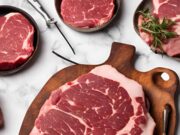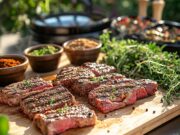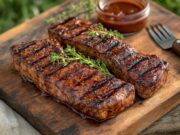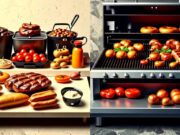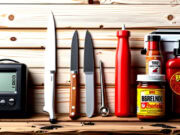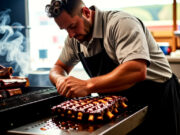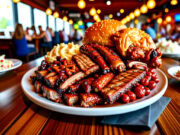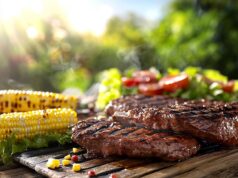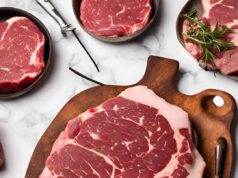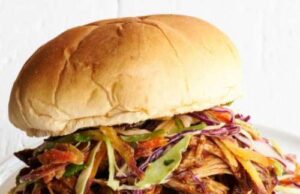When it comes to BBQ brisket, the debate between slow cooking and grilling is as intense as the cooking methods themselves. Each technique offers a distinct flavor and texture to this cherished cut of meat.
This article delves into the various types of brisket and their cuts, compares the slow cooker and grill methods, and provides essential tips for achieving the perfect brisket. You will learn about cooking temperatures, the significance of resting, and everything else necessary to impress at your next barbecue.
Furthermore, you will discover delectable ingredient combinations and side dishes that will enhance your brisket experience. Are you ready to determine which method is superior? Let’s begin.
Key Takeaways:

- Slow cooker and grill are both great methods for cooking BBQ brisket, but each offers a different flavor and texture profile.
- When cooking brisket, it’s important to consider factors like temperature, resting time, and flavor profiles to achieve the best results.
- Ultimately, the best method for cooking BBQ brisket depends on personal preference and desired outcome. Experiment with both methods to find the perfect fit for you.
Understanding Brisket: Types and Cuts
Understanding brisket starts with recognizing the various types and cuts available, as these significantly influence the cooking process and the final outcome. The two primary cuts of brisket are the flat, which is known for its lean texture, and the point, characterized by its marbling of fat and connective tissue that melts into flavorful gelatin during cooking.
Sourced from cattle, brisket comes in both grass-fed and corn-fed variants, each providing distinct flavor profiles that can enhance your BBQ experience. Being aware of these differences is crucial for selecting the appropriate cut for your cooking method.
Cooking Techniques: Slow Cooker vs. Grill
When considering cooking techniques for BBQ brisket, both the slow cooker and grill offer distinct advantages that align with varying preferences and schedules. The slow cooker facilitates a low-and-slow method, which is particularly effective for breaking down tough connective tissues over several hours, resulting in tender, juicy brisket.
On the other hand, grilling brisket provides a hot-and-fast option, producing the smoky flavor and char that many BBQ aficionados desire. Renowned pitmaster Aaron Franklin is celebrated for his grilling techniques that optimize brisket preparation, and familiarizing yourself with these methods can significantly enhance your BBQ skills.
How to Cook Brisket in a Slow Cooker
Cooking brisket in a slow cooker is a convenient method that enables a low-and-slow approach, ensuring that the meat becomes incredibly tender and packed with flavor.
To achieve optimal results, begin by selecting a quality cut of brisket, ideally one with a good amount of marbling. This marbling contributes to the moisture and flavor during the cooking process. Before placing the brisket in the slow cooker, generously season it with a blend of herbs and spices to enhance its rich taste. A combination of garlic powder, smoked paprika, and ground black pepper works exceptionally well.
As you prepare, remember to choose a flavorful liquid, such as beef broth or a mixture of apple cider vinegar and water. This will add depth to the dish and keep the meat juicy. Once the brisket reaches an internal temperature of 195°F to 205°F, remove it from the slow cooker and allow it to rest. This resting period lets the juices redistribute before slicing. This method not only guarantees mouthwatering results but also simplifies meal prep and enhances convenience.
How to Grill Brisket: Techniques and Tips
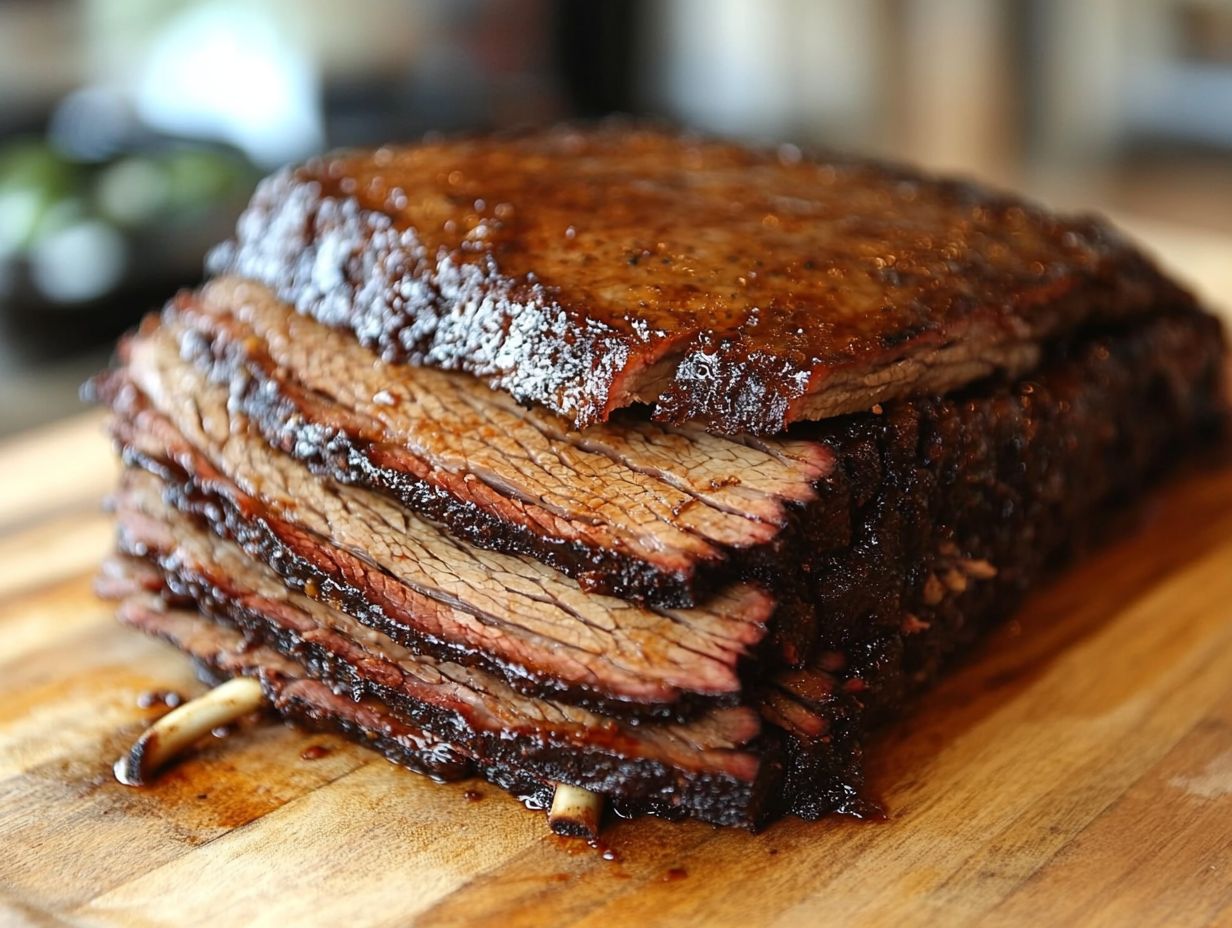
Grilling brisket requires specific techniques that can result in a deliciously smoked brisket with a distinctive charred exterior. Begin by preparing your grill, whether it’s a Weber Smokey Mountain, Kamado Joe, or a Traeger, and ensure that it is preheated to the appropriate temperature for both direct and indirect cooking.
Generously season the brisket, and consider employing the Texas crutch technique, which involves wrapping the brisket during the cooking process. This method helps retain moisture and enhances flavor. Following Aaron Franklin’s techniques can guide you toward achieving the perfect balance of smokiness and tenderness.
It is essential to pay close attention to the internal temperature of the meat, aiming for the sweet spot between 195°F to 205°F. This range allows collagen to break down effectively, resulting in an incredibly juicy texture. Utilizing a reliable meat thermometer can simplify this process, helping you avoid overcooking or undercooking.
Maintaining a consistent grill temperature is crucial; adding wood chips or chunks throughout the cooking process will infuse a rich smoky flavor while creating that desirable bark on the brisket’s surface.
Patience is key when grilling brisket—allowing the meat to rest before slicing will maximize juiciness and provide an exquisite eating experience.
Key Factors in Cooking Brisket
Several key factors play a crucial role in cooking brisket to perfection, with a primary focus on cooking time, temperature, and the importance of allowing the meat to rest before serving. Achieving the right internal temperature is essential for ensuring the brisket is fully cooked while avoiding dryness.
Many experienced pitmasters recommend the technique of cooking by feel, which involves assessing the brisket’s tenderness through touch rather than relying solely on temperature readings. Furthermore, allowing the brisket to rest after cooking is vital as it helps the juices redistribute, resulting in a more flavorful and tender final product.
Cooking to Temperature vs. Cooking to Feel
The debate between cooking brisket to temperature versus cooking to feel is a prevalent topic among BBQ enthusiasts and pitmasters. Cooking to temperature involves utilizing a meat thermometer to achieve the ideal internal temperature, typically around 195°F to 205°F for brisket, ensuring that the meat is both safe and tender.
In contrast, cooking to feel emphasizes the tactile experience, where pitmasters rely on their senses to gauge doneness based on the brisket’s texture and resistance, often resulting in a juicier and more tender outcome.
This discussion prompts essential questions about best practices in BBQ, as both methods have their passionate advocates. Experienced cooks frequently share compelling anecdotes of their experiences with each technique, illustrating that while temperature checks can provide precision, relying on touch and experience can lead to barbecue that delivers unforgettable flavors.
For example, a seasoned pitmaster might reflect on how a meticulously monitored brisket cooked to the right temperature still lacked that ‘melt-in-your-mouth’ quality, leading to a shift toward a more instinctive approach. Experts recommend that a combination of both techniques can be advantageous—using temperature for initial assessments and then transitioning to feel for the finishing touches.
Such insights enhance your understanding of the nuanced relationship between safety, tenderness, and that critical flavor in barbecue.
The Importance of Resting Brisket
Resting brisket after cooking is a crucial step that can significantly enhance its tenderness and juiciness. Once you remove the brisket from the heat source, allowing it to rest for at least 30 minutes enables the juices to redistribute throughout the meat, resulting in a more flavorful and succulent experience when sliced. Skipping this step can lead to dry brisket, as the juices are lost if the meat is cut too soon. Recognizing the importance of resting can elevate your cooking methods and improve your overall BBQ outcomes.
During this resting period, the internal temperature of the brisket will continue to rise slightly, further breaking down connective tissues and enhancing that desirable melt-in-your-mouth quality. It is advisable to wrap the brisket in aluminum foil or butcher paper to maintain warmth while preventing excessive moisture loss. For food safety, it is wise to keep the wrapped meat in a cooler or insulated container if it needs to rest for longer than an hour.
This attention to detail during the resting phase is what distinguishes good BBQ from truly exceptional barbecue.
Essential Ingredients and Flavor Profiles
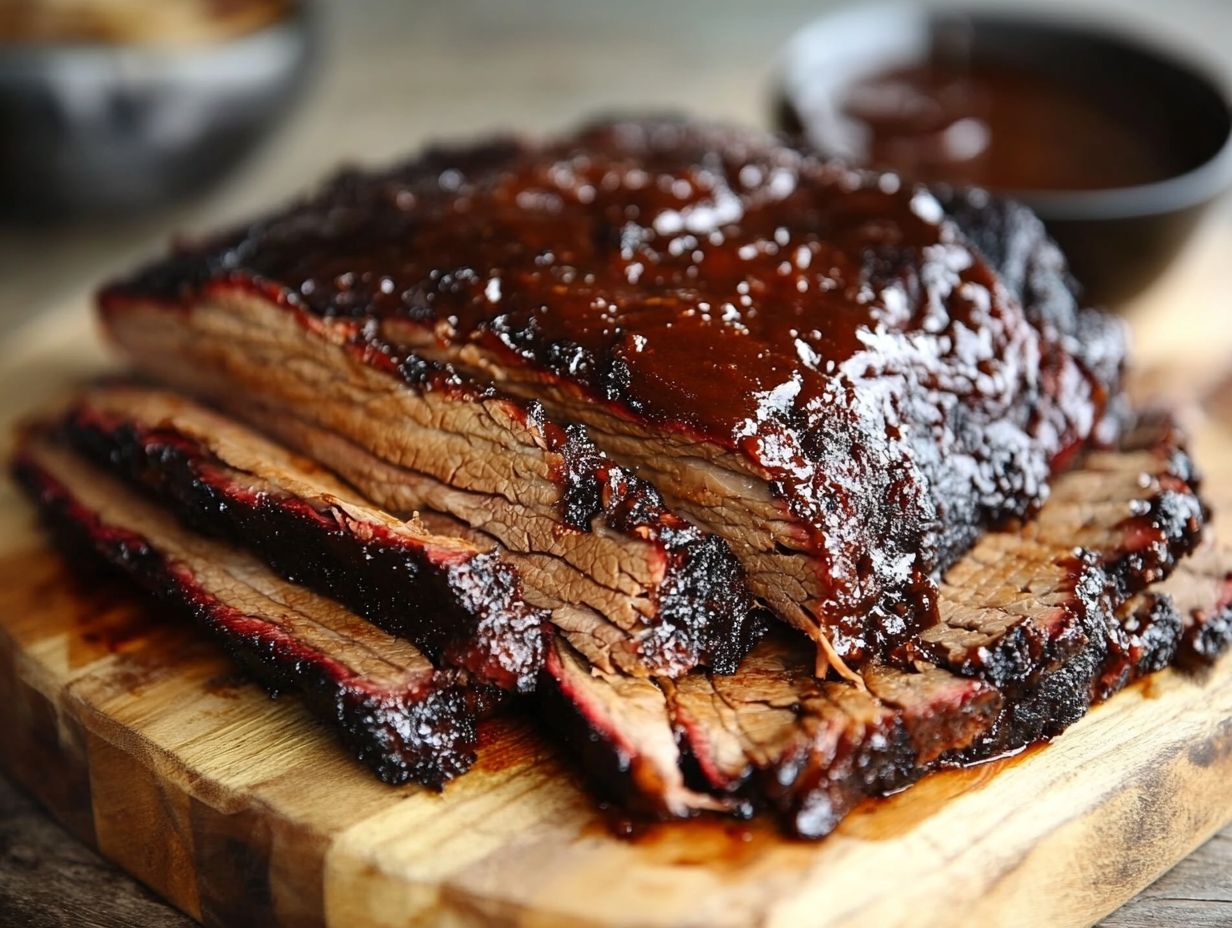
The essence of BBQ brisket encompasses not only the cooking technique but also the essential ingredients and flavor profiles that contribute to its overall deliciousness. A well-crafted spice rub is vital, as it combines various spices to enhance the meat’s natural flavors while preserving the integrity of the brisket.
Furthermore, homemade BBQ sauce can introduce a unique twist, blending sweet, tangy, and smoky notes that elevate the dish. By understanding these ingredients, BBQ enthusiasts can create a juicy, tender brisket that leaves a lasting impression on dinner guests.
What to Serve with BBQ Brisket
Pairing BBQ brisket with the appropriate sides can significantly enhance the meal, creating an authentic taste that complements the rich flavors of the meat.
Traditional accompaniments such as Baked Beans, which add a sweet and savory element, macaroni salad for creaminess, and potato salad that provides a refreshing contrast to the smoky brisket, are excellent choices.
These sides not only elevate the overall dining experience but also highlight the versatility of BBQ cuisine, making it suitable for a variety of occasions.
Common FAQs About Cooking Brisket
When you venture into the world of cooking brisket, you may encounter numerous frequently asked questions regarding best practices, cooking time, and temperature. Understanding how long to cook brisket, the ideal temperature settings, and the significance of resting are common inquiries among both BBQ novices and enthusiasts.
Addressing these FAQs can provide you with clarity and enhance your cooking experience, enableing you to achieve the perfect brisket every time.
Frequently Asked Questions
What is the difference between using a slow cooker and a grill for cooking BBQ brisket?
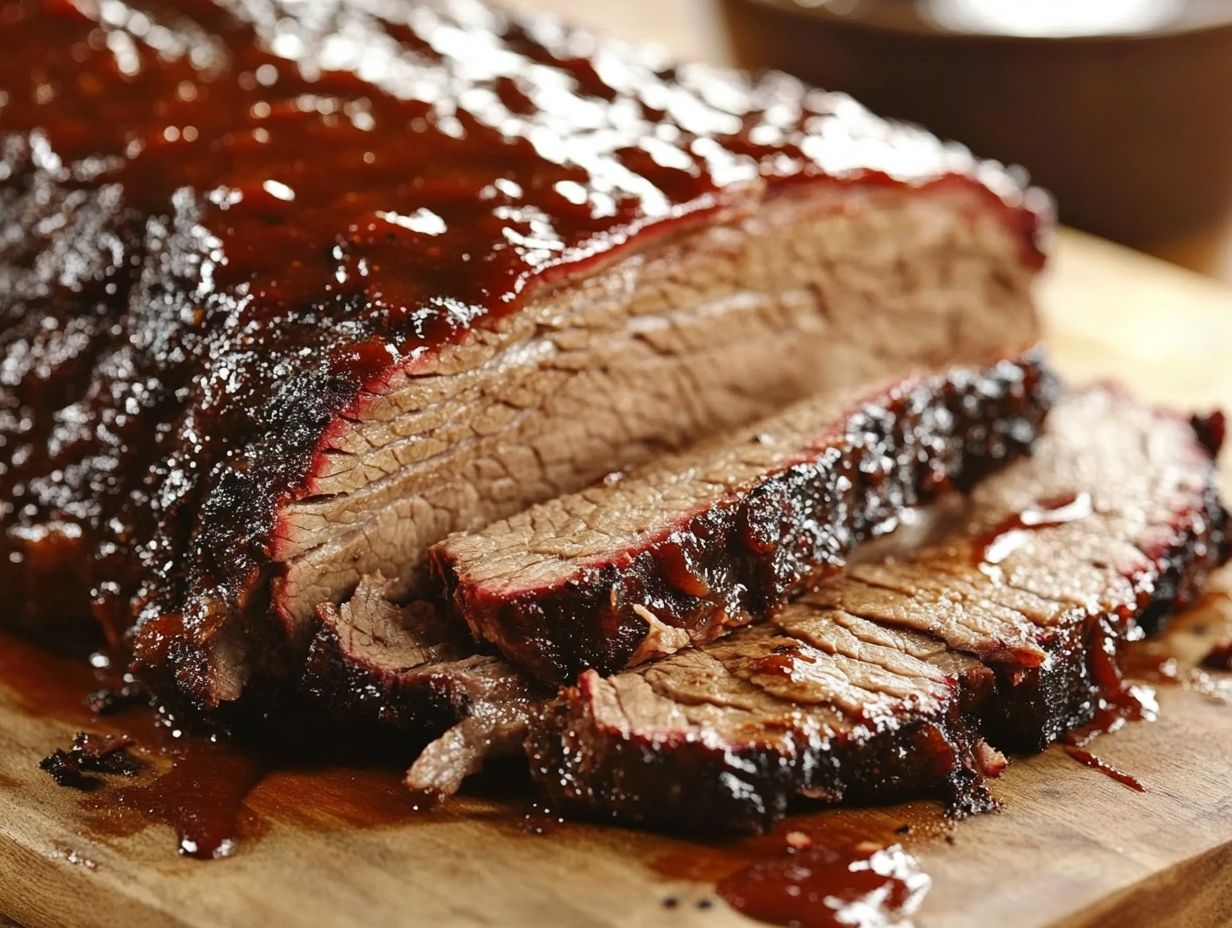
The main difference between using a slow cooker and a grill for cooking BBQ brisket is the cooking method. Slow cookers use low, indirect heat to slowly cook the meat, while grills use high, direct heat to quickly cook the meat. Additionally, slow cookers are typically used indoors, while grills are used outdoors.
Which method is better for cooking BBQ brisket: slow cooker or grill?
It ultimately depends on personal preference and the desired outcome. Slow cookers tend to result in a more tender and moist brisket, while grilling can create a smokier and more caramelized flavor. Both methods have their own unique advantages.
What are the benefits of using a slow cooker for cooking BBQ brisket?
Using a slow cooker for cooking BBQ brisket allows for hands-off cooking with minimal effort. The low and slow cooking method also helps to tenderize the meat and infuse it with flavors. Slow cookers are also convenient for indoor cooking, making it a great option for year-round BBQ.
What are the benefits of using a grill for cooking BBQ brisket?
Grilling BBQ brisket allows for a quicker cooking time and the ability to achieve a charred and smoky flavor. Grilling also allows for more control over the cooking process and the option to add wood chips for additional flavor. It is also a great option for cooking outdoors and hosting BBQ parties.
Can I use both a slow cooker and a grill for cooking BBQ brisket?
Yes, you can use both a slow cooker and a grill for cooking BBQ brisket. Some people even use a combination of both methods, starting the brisket in the slow cooker to tenderize it and then finishing it off on the grill for added flavor and texture.
How do I decide which method to use for cooking BBQ brisket?
Consider your personal preferences, the equipment you have available, and the occasion for cooking BBQ brisket. If you want a hands-off and tender brisket, a slow cooker may be the best option. If you want a smokier and quicker cooking time, a grill may be the better choice. You can also try using both methods to see which one you prefer.


